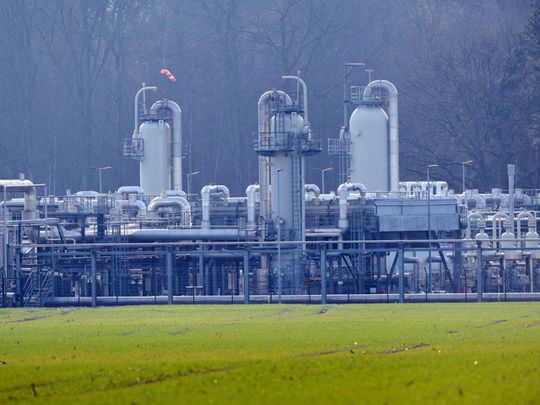
US natural gas futures rose for a second straight session on Wednesday, tracking gains in crude oil, and moving further away from a 12-week low touched earlier in the week.
Front-month gas futures for November delivery rose 9.3 cents, or 1.4%, to settle at $6.930 per million British thermal units (mmBtu).
Outside influences like higher oil prices were supporting natgas, after driving a bounce in the previous session in a risk-on environment, said Phil Flynn, analyst at Price Futures Group.
Oil prices rose on Wednesday to three-week highs, as OPEC+ agreed to its deepest cuts to production since the 2020 COVID pandemic, despite a tight market and opposition from the United States and others.
Gas was trading around $47 per mmBtu in Europe and $38 in Asia.
"Next month the exports are going to be huge and probably will be breaking records once we start to see LNG export terminals come out of maintenance and we get Freeport back online," Flynn said, adding that the market will also be watching the weather in November for signs of a long, cold winter.
Energy crunch
Europe may face an even more acute energy crunch next year after draining its natural gas tanks to get through the cold of this winter, the head of the International Energy Agency said on Wednesday, as the EU looks for ways to ease the crisis.
Data provider Refinitiv said average gas output in the U.S. Lower 48 states rose to 100.3 bcfd so far in October from a monthly record of 99.4 bcfd in September.
With cooler weather coming, Refinitiv projected average U.S. gas demand, including exports, would rise from 90.1 bcfd this week to 90.8 bcfd next week. The forecast for both weeks was higher than Refinitiv's outlook on Tuesday.
The average amount of gas flowing to U.S. LNG export plants fell to 11.0 bcfd so far in October from 11.5 bcfd in September. That compares with a monthly record of 12.9 bcfd in March. The seven big U.S. export plants can turn about 13.8 bcfd of gas into LNG.












